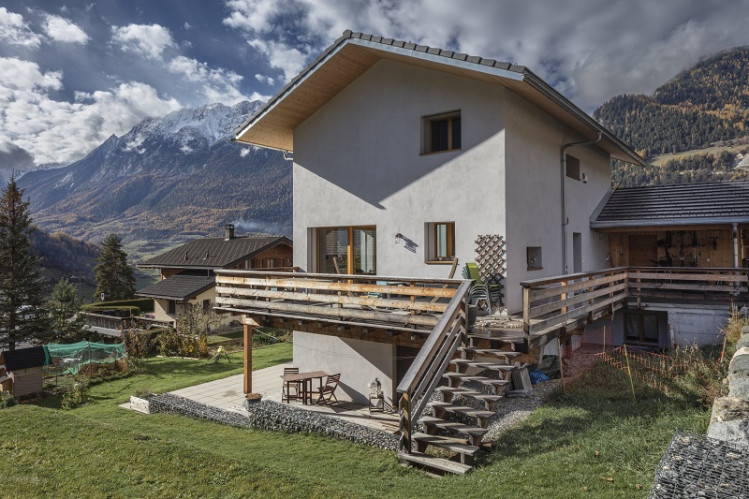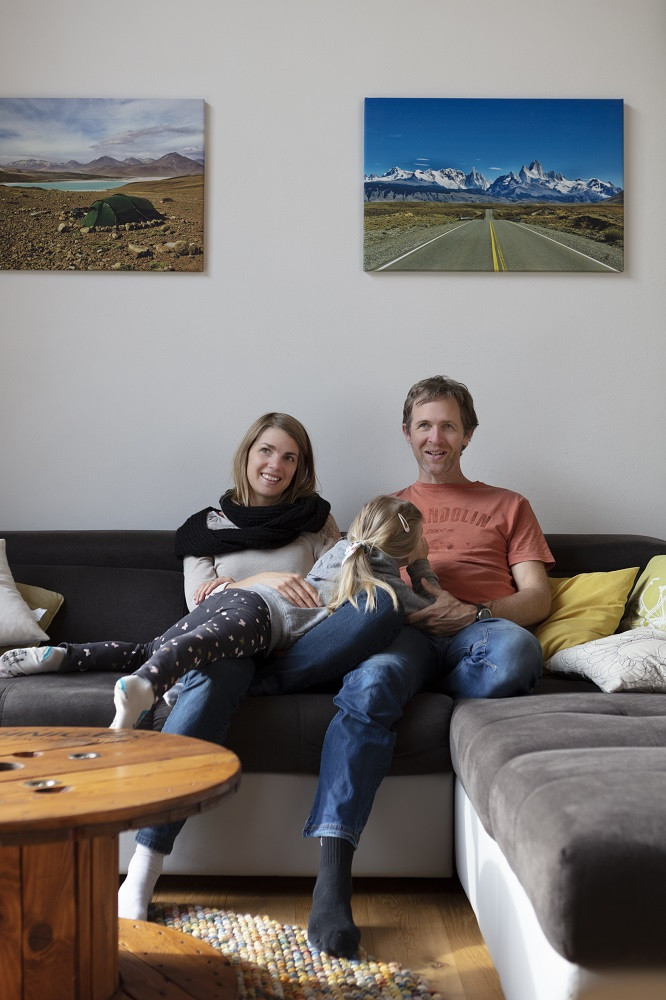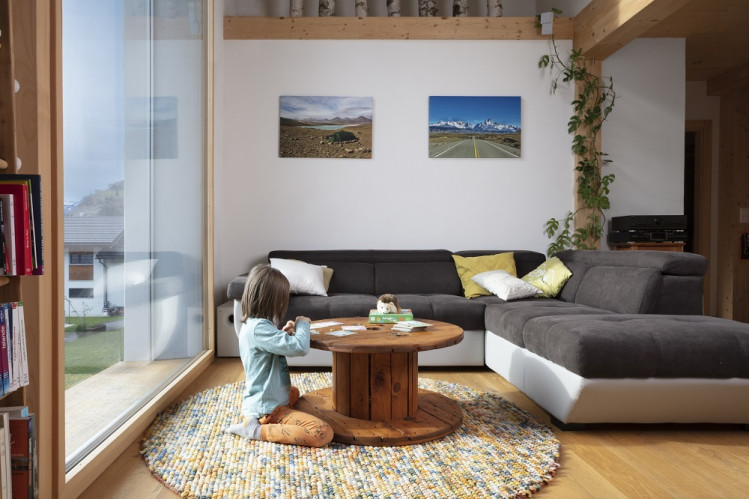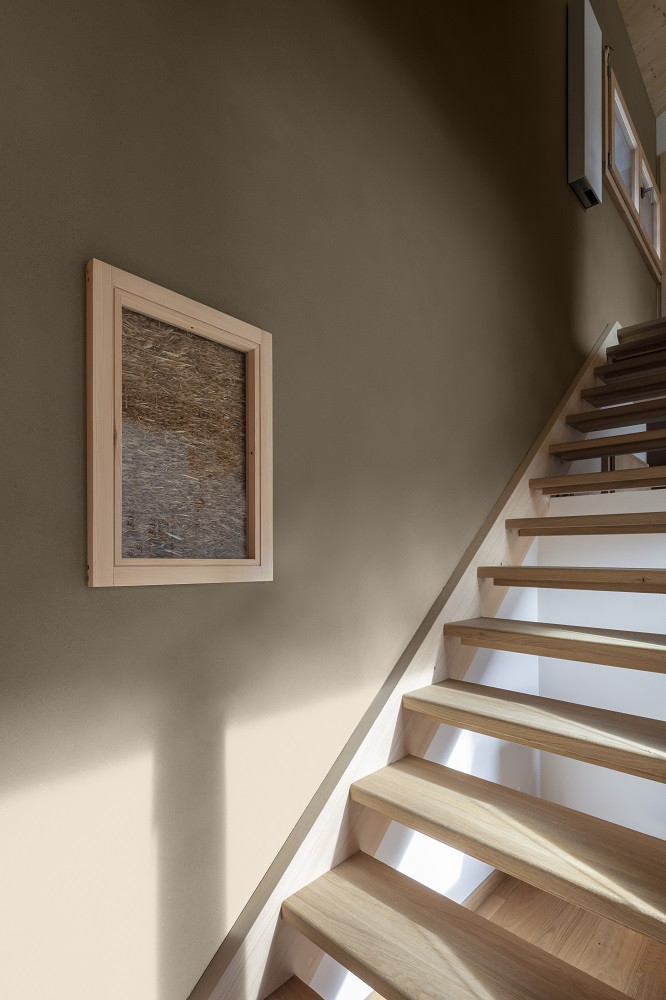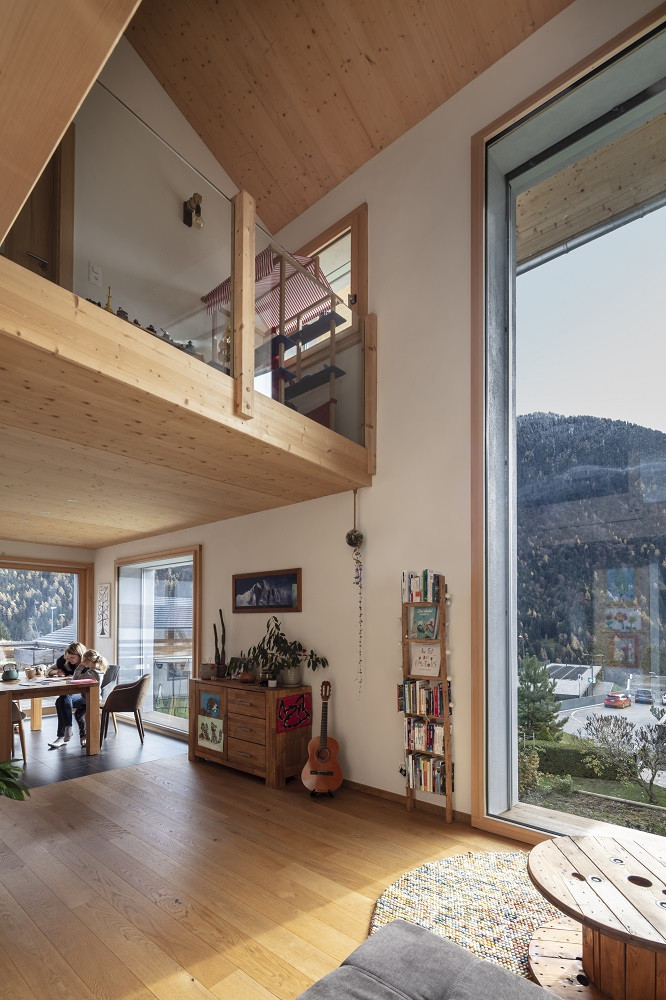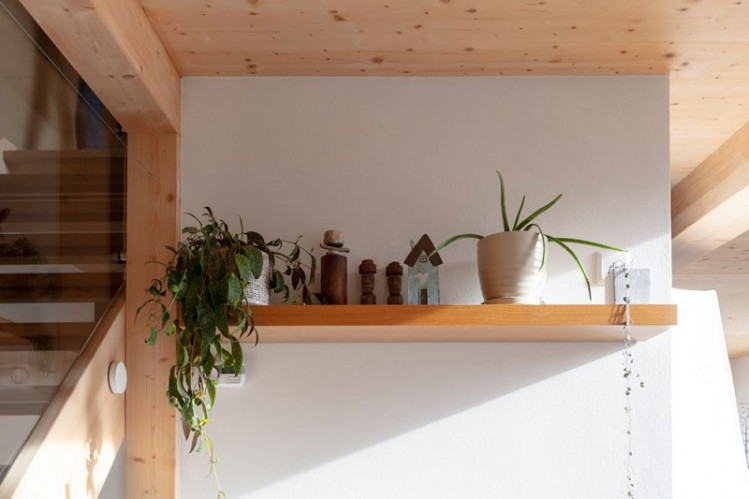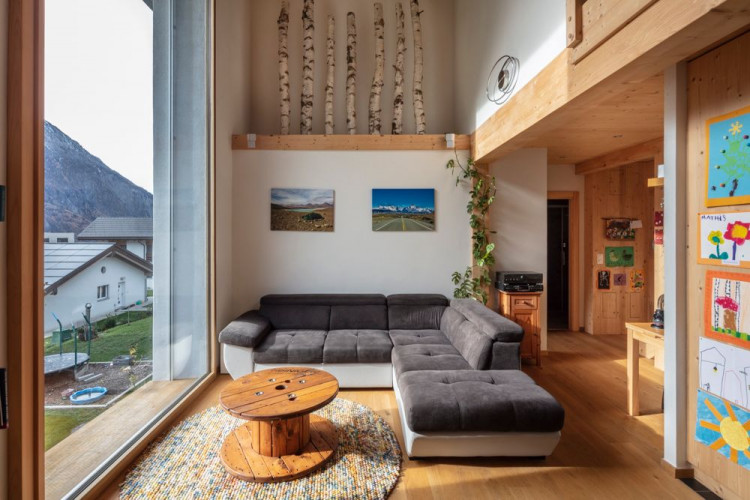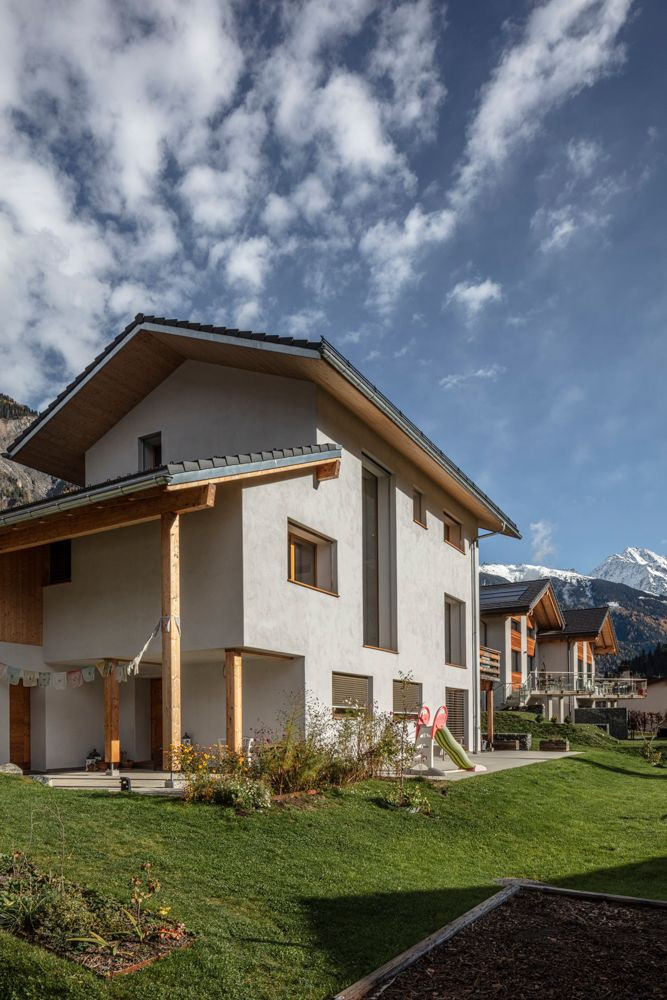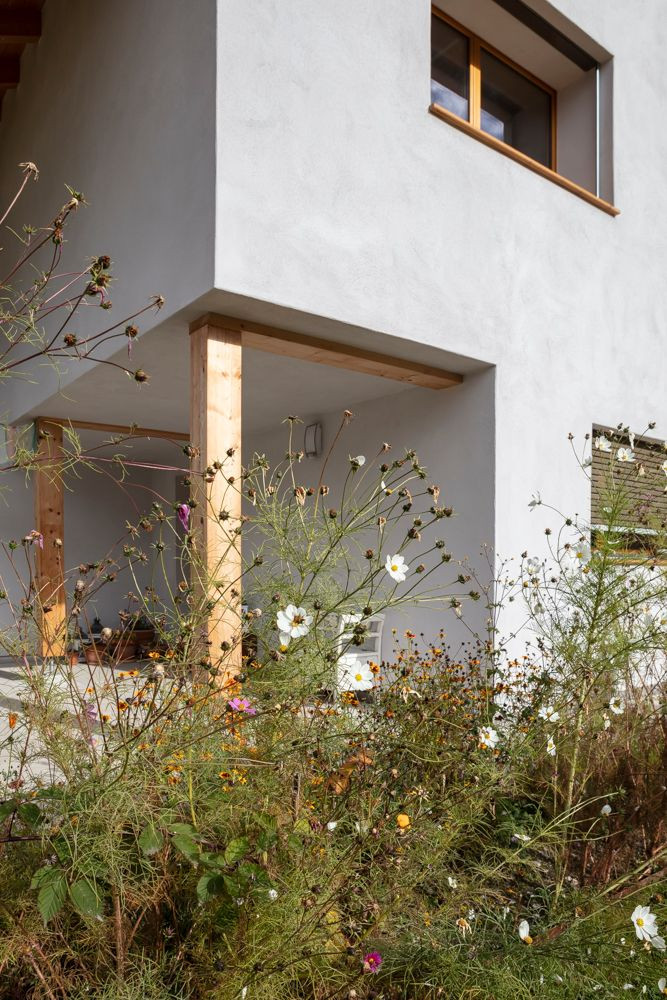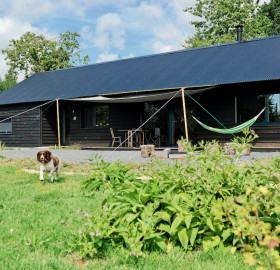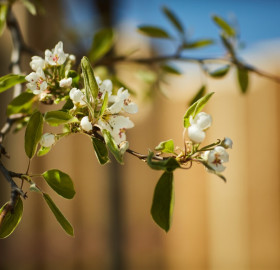As the saying goes, “the world is a book and those who do not travel read only one page.” If true, that makes Magali and Stefan Carron avid readers. The young Swiss couple has dedicated a chapter of their lives to a bike journey throughout the entirety of South America that lasted over two years.
Although ecologically-minded already, the true inspiration to live in a sustainable home came in Argentina. Carrons returned home with a burning eco passion. When the time came to build a house, they knew what to do. But not how.
Fast forward to today, their modern and cosy home stores tons of CO2, costs pennies to heat, and is an oft visited curiosity admired by architects, craftsmen, homeowners and eco-enthusiasts alike. It didn’t take long before the story was picked up by the local media, and dominated the conversation within eco circles.
We have reached out to the happy inhabitants for an interview. Read on and find out more about:
- Their days of riding through the continent
- The beginnings of their building journey
- Avoiding the budget and contractor bumps on the road
- Reaching the pinnacle of sustainability and energy-efficiency
- Unwittingly creating a small eco-village in the neighbourhood
You have gone on an extraordinary bike tour in South America, crossing the entire continent from Ecuador to Argentina, and came back with a desire for a healthy home. What was it about this trip that set your eco journey into motion?
Seeing the land from the seat of a bike was a great experience. You can truly take in each moment and forge lasting memories. But we also had this idea of compensating, if you will, for the air travel to the continent. At the time, we thought of environmental impact mostly in terms of fuel or electricity consumption. We never thought of energy efficiency of buildings and had no idea what embodied energy was.
This changed when we reached Ushuaia in Argentina and visited an Earthship designed and built by Michael Reynolds. We suddenly realised that a house built from natural materials could be comfortable and absolutely self-sufficient. In a harsh climate, no less.
The echoes of this experience came back two years later, when we had been planning a house of our own. We thought, “Why not do things differently?”
When you came back to Switzerland, you decided to build with straw bales. Why? Was it feasible?
Straw wasn’t something we considered at first. We did a thorough research into embodied energy, passive houses, and the health impact of synthetic materials. In the end, timber frame and straw insulation came out on top. They have the best properties, no contest.
However, like you say, it was not feasible for us at the time. As you know, self-building with straw bales is extremely time-consuming, and would certainly mean working weekends and involving our friends in the building process. With a young child, this wasn’t an option for us.
How did you come across EcoCocon and our Swiss partner Roberto Camarasa?
A friend of ours heard about the EcoCocon system from fellow tourists on a vacation in Laos. That’s when everything fell into place.
Here we have a ready-made solution allowing us to build with straw without any of the hassle — prefabricated timber-straw panels. In addition to that, the system seemed to be able to push straw into the mainstream and go professional, because the assembly can be carried out by any craftsman.
Roberto was great and kept things simple, which helped us to make our decision. He was confident about the system, but didn’t oversell it. He simply offered us the product as it really is.
After a long search, you found the perfect plot of land that was owned by an investor. What was his reaction when you explained your idea of a sustainable home?
Frankly, we thought he would slam the door in our face. To change all the main materials and take out the heating system in a building that had already been designed and marketed, while trying to keep the same budget? Madness!
Luckily, it turned out he had a flair for the avant-garde and the environment, and wasn’t scared to get out of his comfort zone. Quite the opposite. He was happy to build a house with low environmental impact, and curious to test the results over several years.
The budget you set for yourselves was an especially ambitious goal — a passive house for the price of a regular home. Was there more to it than finances? Perhaps you wished to lead by example?
You could say that.
It seemed possible to us to move the budget from one item to another without adding up the solutions and increasing the cost. If it worked, why not actually lead by example, or at least show the feasibility of the whole enterprise?
The most difficult part of the project was to carry out comparative studies to move forward without too much risk, since no architect had the requisite experience in preparing a quote for this kind of solution.
One thing that could’ve been better anticipated (although it's easy to be a general once the battle is over) is the collaboration with one of the main craftspeople. The carpenter wasn’t familiar with the product, and he didn’t quite understand it. As a result, he underestimated his offer. However, thanks to everyone’s effort, it was possible to smooth things over and correct the situation.
You went above and beyond in pursuing energy efficiency. The house has no central heating system and uses solar panels. What do your energy bills come down to?
The first winter, the total heating cost for the house reached 115 CHF (Editor’s note: around 115 EUR). That is how much we spent on pellets for the stove. The second winter it was 95 CHF.
In terms of electricity, the building produces 3x more energy than it consumes. Energy that is re-injected into the network is priced at 3x less than energy that is taken from the grid. That brings us to 0.- costs overall. Going completely off-grid was an option, but we wished to avoid the embodied energy of batteries. Most of the costs are at the level of taxes for drinking water and wastewater, but here again the recovery of rainwater helps to lower the costs.
The house oscillates between 19° and 22° during winter, with 2-3 hours of sunshine or 2-3 hours of pellet stove heating. During summer, it never exceeds 24-25°, even though we rarely open the windows at night. The ventilation unit with heat recovery takes care of air renewal.
Your home has become something of a media sensation in Switzerland. You attracted journalists, curious architects, and lay homeowners alike. You even do regular house tours. What are the reactions you get from the visitors?
Everyone who had visited seemed to find the solution brilliant. Of course, an unknown budget is a certain risk some people are not willing to take. Especially when they’re in a rush. It’s difficult to change settled habits, and it will take some time.
You finished construction just in time for the pandemic to hit, and you've been enjoying your new home for over two years now. Hand on heart, is the comfort really that good?
All the expectations were successfully met. The large windows contribute to an open-air feeling, and the natural materials do not stifle the sensations as concrete or synthetic materials do. In winter, a few kilograms of pellets are enough to maintain a pleasant temperature when the sun’s heat is not enough. The ventilation with heat recovery takes care of continuously renewing the air.
Sleeping with closed windows is, therefore, more than possible and the house doesn’t get cold. Even in summer, the ventilation does its job very well. The house doesn’t overheat and, again, there is no need to open the windows at night and suffer outside noises.
Are you happy to soon have Roberto and his family as neighbours? :-)
We think it will be great for EcoCocon to have several buildings in the same village. The same street, no less! It is always easier to communicate the benefits when there are several 'concrete' examples at hand. Pardon the expression.
But yes, definitely :-)
Roberto and Katalina have become true friends of ours. Our visions of construction are totally in line, but that’s not all. Their sensitivity and environmental commitment always surprise us and inspire us to do more. We really look forward to seeing them more often.
Do you have any tips or a message for aspiring home-owners?
Do not hesitate! We wouldn’t change anything, even if given the chance to go back. There’s no sense in using more resources for lesser comfort. “EcoCocon” homes are aptly named.
Architect: Rodolphe Perreten Architecture
Photos: Delphine Burtin

